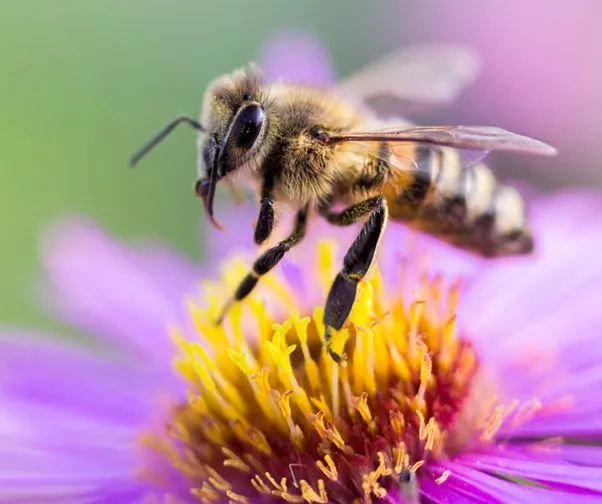Gardens are meant to be a private haven where you can relax with your family and entertain friends. There’s so much you can do with a garden – but one of the primary concerns people have is enjoying their space without compromising the environment.
The good news is that anyone can create a relaxing and tranquil space that focuses on sustainability and won’t require much maintenance.
In this post, we’ll reveal how to create an eco-friendly, low-maintenance garden that you’ll enjoy for years.
Why is an eco-friendly garden so important?

We’ve known for a long time that the planet is in danger, but it’s only in recent years that people have begun to make positive lifestyle changes. Even the smallest effort counts for a lot, so your garden does matter.
An eco-friendly garden is vital for numerous reasons, including:
Preserving the environment
When you use organic soil and focus on recycled items for your garden, you can do your bit for the environment and save money. Pollution is an ongoing problem, but small changes in your outdoor space will make a big difference.
Protecting wildlife
Constantly developing land means many animals lose their natural habitat and have nowhere to go – but you can make a difference. Creating a garden that encourages wildlife gives back to the environment and preserves some of the most important creatures.
Eco gardens are more resilient
Another reason for a sustainable garden is that it’s more resilient to climate changes. As you’ll choose the right plants for your garden, it will also be a more durable space. You won’t need to water it as much, and there are fewer maintenance requirements.
Creating an Eco-Friendly Garden

So, now you know why an eco-friendly garden is important; it’s time to look at how you can create one that also requires minimal maintenance. Following these steps ensures a beautiful outdoor space that will last for a long time.
Plant wisely
When it comes to plants suitable for an eco-friendly garden, you need to think native. Native plants are well adapted to your local area and don’t require much maintenance or water – plus, they’ll attract birds and butterflies.
Choosing the wrong plants often means you end up doing a lot more work because they’ll require cultivation and strict watering schedules. Tropical plants might look beautiful, but they’re not sustainable options for a British garden.
Don’t worry, though, because there are plenty of shade-loving plants that are suitable for your outdoor space.
Choose sustainable materials
If you’re creating pathways, decks, walls or other features in your garden, make sure you use sustainable materials. Look out for items made from recycled wood or plastic – they look just as good but with a fraction of the environmental impact.
You can also look on Upcycle sites or ask local garden centres for advice on which materials are best. Joining a gardening group can also be beneficial, as you can swap items with fellow gardeners and save money.
Go organic
Whether you need soil, compost or fertiliser – always choose organic options. These often cost slightly more but won’t contain harmful chemicals or toxins, which can harm wildlife and the environment.
Organic methods have been around for centuries, but in recent years, people have started to understand their importance. Not only are they better for the environment, but organic gardens also produce tastier food.
Switching to an organic garden doesn’t have to be a headache; it’s relatively simple when you know what you’re doing.
Add water features
Water is essential for any garden – it encourages wildlife and helps plants grow. If you can, add a small pond or fountain with running water (which some animals need).
Introducing a water feature is not essential, but they look great and can be sustainable. If you’d rather have a low-maintenance garden, opt for a large water butt that collects rainwater and keeps your plants watered throughout summer.
Recycle household items
Eco-friendly gardens are often made of recycled items, so start by looking around your home. With some imagination and DIY skills, you can turn an old wheelbarrow into a planter or use broken crockery to create a mosaic path.
Making items from wood pallets or reusing bricks for patios and pathways is also possible. By repurposing these materials, you’ll give them a second chance and help the environment simultaneously.
Make compost instead of buying it
When it comes to composting, you don’t need to buy bags from the garden centre – make your own. All you need is a large bin or barrel and some brown and green waste (such as leaves, grass clippings and vegetable peelings).
Mix these together and let them break down for a few weeks before adding them to your garden beds.
Composting isn’t just good for the environment; it’s also an easy way to save money. Plus, composting helps reduce food waste which contributes to global warming.
Plan your garden layout
Last but definitely not least, an eco-friendly garden relies on careful planning. Most people use a landscaping company specialising in personalised garden plans for this stage because there are a lot of elements to consider when planning a garden.
Your landscape design company will look at the position of your garden and ask what you want to achieve before sketching out a basic design. The design will then incorporate the elements you’d like to include and focus on the position of your plants.
Once you have a design in place, you can work on creating your brand-new outdoor space.
The bottom line
An eco-friendly garden will ensure you contribute positively to the environment and make sustainable lifestyle changes. However, it can also help when you decide to sell your home, as prospective buyers won’t have to do any work on the space.
Most importantly, your garden will ensure you enjoy fresh food, appreciate the sounds of wildlife and have a great space to entertain people.
If you’d like some help designing your eco-friendly garden, please don’t hesitate to contact the team at Floral & Hardy. Our friendly designers are always on hand to offer inspiration.



